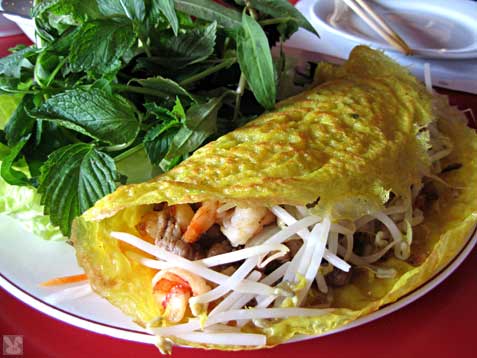Vietnam is an elongated S-shaped strip of land, stretching from the fertile Mekong Delta in the south to the karst-filled scenery in the north. This is a country 33 times longer than its narrowest width, resulting in surprising diversity among its peoples, food, and landscape.
We landed at Ho Chi Minh City (formerly Saigon), a teaming, vibrant metropolis which is the biggest city in the country. It took a bit to adjust to the sweltering humidity, but the tropical monsoon climate is why fruits are so abundant throughout the year.

Since our two favorite past times are checking out local foods and markets, the hot weather was a great excuse for trying out all the ice cream I could find, including my husband’s favorite, durian ice cream (and no, he’s not Asian). We did the obligatory Cu Chi Tunnels tour, but really found browsing around the Bến Thành Market and cooling off at Fanny’s ice cream café much more fun.
After a short stint in Saigon and getting our fill of ice cream, pho (hearty noodle soup usually served with a plate of UFO herbs) and banh xeo (yummy Vietnamese omelets), we headed for Angkor Wat in Cambodia, eventually wound up in the Imperial city of Hue in Central Vietnam.

Although reflecting heavy Chinese influence, the Imperial architecture showed more restraint than Beijing’s Forbidden City, and as a result was more approachable. Sad to say, the ‘imperial feast’, popular among local restaurants, is really designed for tourist consumption.


Hoi An, our next stop, is a designated UNESCO World Heritage site and is a quaint old town with hundreds of structures protected as historical landmarks. It’s great for strolling around, with pleasant cafes, bakeries, and shops housed in restored pastel colored colonial buildings.

But one of the highlights of our stay was the discovery of a Central Vietnam specialty – my quang – a wonderfully flavorful noodle dish that we had for breakfast one day.

The other was our cooking class at the Red Bridge Cooking School. It was fun learning to make banh uot (fresh rice paper) to use it for the cha gio tuoi (fresh rice paper rolls of shrimp), as well as banh xeo and Vietnamese eggplant in clay pot among other dishes. It was a great deal considering the cost of the class also covered our lunch, non-alcoholic drinks, and a scenic boat ride along the Hoi An river to the school!



